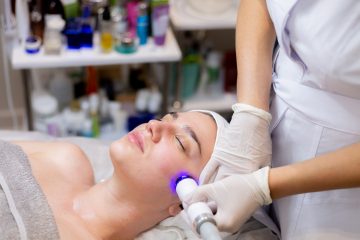What is Hyperpigmentation?
Hyperpigmentation refers to patches of skin that become darker than the surrounding areas. It occurs when an excess amount of melanin, the pigment responsible for skin color, accumulates in certain areas of the skin. This condition is common among various skin types and is usually harmless, though it can impact a person’s confidence because of its appearance.
Hyperpigmentation can develop in several forms and may be triggered by factors such as sun exposure, hormonal changes, inflammation, or certain medications. Although it is not dangerous, identifying its underlying cause is important for choosing the right treatment, such as a chemical peel to lighten dark spots and promote even skin tone. Unlike conditions like vitiligo, which cause a loss of pigment, hyperpigmentation leads to darker patches of skin.
Common Causes of Hyperpigmentation

Several factors contribute to the development of hyperpigmentation, with sun exposure being one of the most common causes. Ultraviolet (UV) rays from the sun accelerate melanin production, leading to dark spots, often called sunspots or age spots. Protecting your skin from excessive sun exposure is essential to prevent these spots.
Hormonal changes also play a significant role. Conditions like melasma, often linked to pregnancy or hormonal contraceptives, can cause dark patches, particularly on the face. Treatments such as red carpet facial can help rejuvenate the skin and improve overall tone. Hormonal imbalances may trigger melanin overproduction, so monitoring hormonal therapies is important.
Certain medications and medical conditions can also cause hyperpigmentation. For instance, some chemotherapy drugs, antibiotics, and anti-seizure medications may increase melanin production. Additionally, skin trauma or inflammation, such as acne or eczema, can lead to post-inflammatory hyperpigmentation, where the skin darkens after healing.
Types of Hyperpigmentation
Hyperpigmentation is categorized into three main types: melasma, sunspots, and post-inflammatory hyperpigmentation (PIH). Each type has distinct characteristics and causes, which influence the treatment approach, and skin whitening treatments are often tailored to address these specific pigmentation concerns effectively.
- Melasma: This type is often triggered by hormonal changes and is more common in women. It appears as larger patches of darkened skin, typically on the face. Melasma can be stubborn, often requiring a combination of treatments to manage effectively.
- Sunspots: Also known as liver spots or solar lentigines, these are caused by prolonged sun exposure. They tend to appear on areas frequently exposed to the sun, such as the face, hands, and arms. Sunspots are usually small and flat but can darken over time if left untreated.
- Post-inflammatory Hyperpigmentation(PIH): This type occurs after skin trauma or inflammation, such as acne or injury. It results in dark spots that are usually temporary but may take considerable time to fade. PIH can affect any skin type but is more prevalent in individuals with darker skin tones.
Understanding the type of hyperpigmentation you have is crucial for selecting the most effective treatment options and preventive measures.
Effective Solutions to Fade Hyperpigmentation
Addressing hyperpigmentation involves various treatments, ranging from topical products to professional procedures. Over-the-counter creams with ingredients such as hydroquinone, retinoids, or vitamin C can lighten dark spots by reducing melanin production and promoting skin cell renewal.

For more persistent cases, chemical peels and laser treatments offer effective solutions. Chemical peels use acids to exfoliate the top layer of skin, while laser treatments target melanin deposits to create a more even tone.
Natural remedies like aloe vera, green tea, and licorice extract can also help, especially for those seeking gentler options. These ingredients soothe the skin and gradually reduce pigmentation, though results may take longer to appear.
Skincare Routines for Treating Dark Spots
Developing a consistent skincare routine is essential for managing hyperpigmentation. Start with a gentle cleanser to remove impurities without irritating the skin, followed by a toner to balance your skin’s pH levels and enhance the effectiveness of treatments.
Include targeted products such as serums or creams with active ingredients like niacinamide, azelaic acid, or glycolic acid. These help fade dark spots and improve overall skin texture. Apply a moisturizer to lock in hydration and maintain a healthy skin barrier.
Sun protection is non-negotiable. Use a broad-spectrum sunscreen with an SPF of at least 30 every day, even on cloudy days or indoors, and reapply every two hours when outside. Sunscreen not only prevents new dark spots from forming but also protects existing ones from darkening.
Professional Treatments for Hyperpigmentation
For those seeking faster or more noticeable results, professional treatments can be highly effective. Microdermabrasion is a minimally invasive procedure that exfoliates the skin, helping reduce dark spots and improve texture, making it ideal for mild cases of hyperpigmentation.
Intense Pulsed Light (IPL) therapy is another option that uses light energy to target and break down melanin. It can address different types of hyperpigmentation and is generally more suitable for lighter skin tones. Multiple sessions may be needed for optimal results.

Consulting a dermatologist is essential to determine the most appropriate treatment based on your skin type, the severity of pigmentation, and your personal goals. Professional guidance ensures both safety and effectiveness.
Conclusion
Embracing healthy skin means understanding and addressing conditions like hyperpigmentation with care and knowledge. By identifying its causes and types, you can tailor your skincare routine and treatments to your specific needs.
Whether you choose natural remedies, or professional treatments consistency is key to achieving and maintaining results. Remember, skin health is a journey and embracing it with confidence is the ultimate goal.
For those starting this journey, consulting a dermatologist can help develop a personalized plan. This investment in your skin health can lead to lasting improvements and greater confidence.
